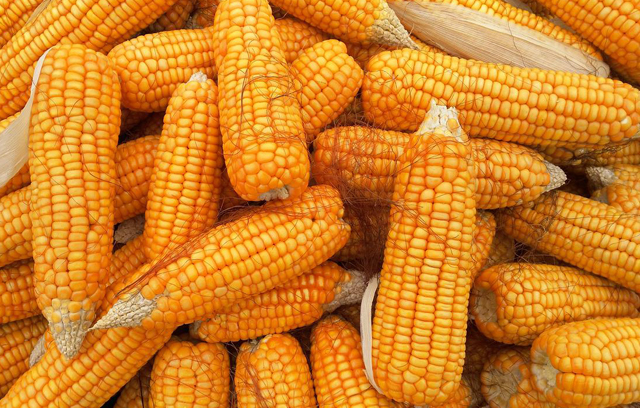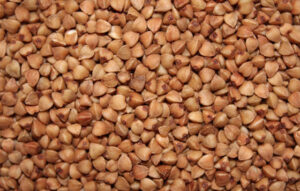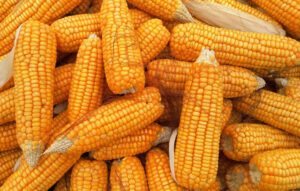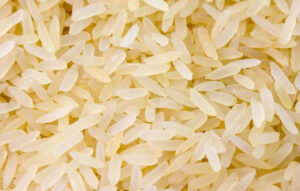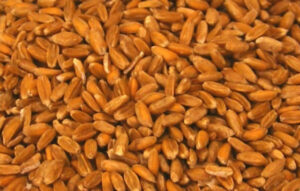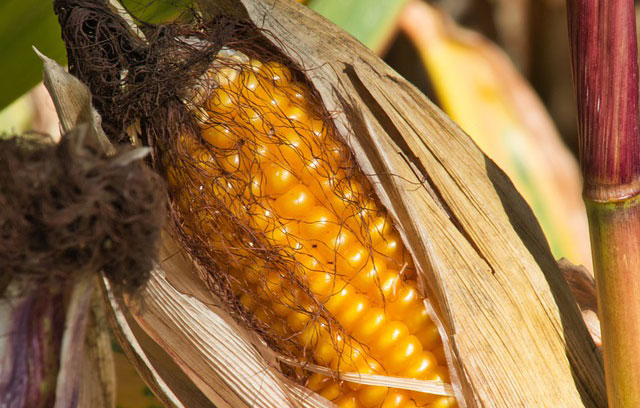GrainProTrade – Mais Großhandel zu Erzeugerpreise
Our company Grain ProTrade liefert den Mais direkt von den Landwirten aus Kasachstan, aus der Ukraine und vor allem aktuellen aus Russland zu günstigen Konditionen. Russland ist zurzeit ein führender Anbieter von Mais ohne die Gentechnik (international: non GMO), denn die Gentechnik-Anwendung ist in Russland im Gegensatz zu Ukraine verboten. Der Mais aus Russland ist daher ein willkommenes Produkt und hat einÖlgehalt von mehr als 35%, einer Reinheit von 98% und einem Feuchtigkeitsgehalt von nicht mehr als 14%.
Sie können den Mais sicher bei uns kaufen, ohne sich Sorgen um die Qualität zu machen, da alle unsere Produkte von unseren QM-Mitarbeitern in Russland, Kasachstan und der Ukraine bewusst auserwählt werden und dadurch den höchsten Normen entsprechen, was eine zu erwartende Qualität der Ware garantiert. Neben dem hohen Standard werden die Produkte zu einem erschwinglichen Großhandelspreis verkauft. Die Bedingungen für den Verkauf von Mais können jederzeit schriftlich oder telefonisch mit dem Manager angegeben werden. Unser Team liefert unseren Kunden den in Big Bag abgepackten Mais mit LKW innerhalb von 5-10 Arbeitstagen.
Current prices for corn:
- Der Mais aus der Ukraine zum DAP-Preis from 250,- € /Tonne inkl. der Frachtkosten mit einem LKW,
- Den Mais aus Russland zum FOB- Preis von 190,- € /Tonne oder einem CIF-Preis von 220,- € /Tonne inkl. der Frachtkosten mit einem Schiff, zum Beispiel zum Hafen Alexandria / Ägypten oder zum Hafen Mersin /Türkei oder zu einem anderen Hafen in Afrika, im Nahen Osten oder Süd-West bzw. Süd-Ost Asien.
The main advantages of the ZusaWorking with our company:
- the high level of professionalism of our entire team, which ensures a hassle-free delivery of quality corn in the shortest possible time;
- ein angemessenes Preisniveau, da wir direkt mit Maisproduzenten in Russland, Kasachstan und der Ukraine zusamen work;
- convenient delivery straight to you.
Contact our managers on the website or by phone. We offer high quality corn at an optimal price!
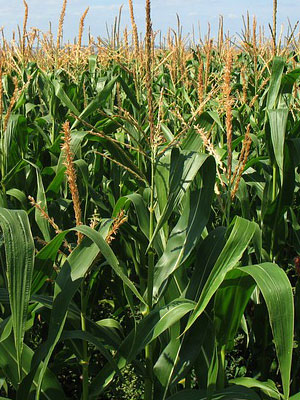
Corn field
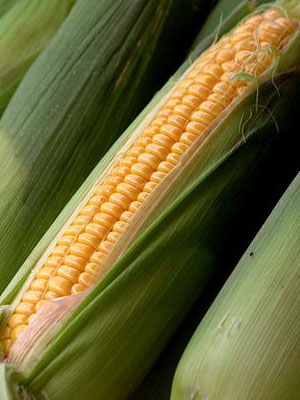
corncob

corncob

Corn

Corn
All about corn
Corn is considered to be the oldest cultivated plant on earth that is unable to self-seed and become wild. As an important part of the diet, corn is inferior only to wheat and rice.
The biochemical properties of corn make it a very useful food. It contains valuable vitamins of group B, PP, C, potassium, phosphorus, molybdenum, fluorine, iodine, copper and others for humans. The ZusaComposition of corn kernels includes fats, carbohydrates, monosaccharides, disaccharides, fiber, starch, ash. The corn protein contains essential amino acids such as lysine and tryptophan. And as you know, lysine is one of the limiting acids needed for the absorption of dietary proteins in the human body.
When we talk about "food" corn, we only mean sweet varieties. At the stage of milk ripening, corn kernels have a mild and delicate taste, this is due to a reduced starch content and a high content of polysaccharides. Yellow corn varieties also have a high content of carotene and mineral salts such as antioxidants and carotene at the milk ripening stage. Carotene does a lot of work in our body, for example: it protects us from free radicals, increases resistance to stress, helps the body to adapt faster to unusual and difficult conditions.
It has been found that corn is an easily digestible crop that has high nutritional and nutritional value biohas logical value. When corn is included in the diet, the metabolic process is activated, which has a positive effect on well-being, vitality and general recovery. Corn kernel is a source of protein for the human and animal body. In the Zusacomposition of corn kernels, the protein content is approximately 11,8%.
It is known that proteins form viscous colloidal solutions, which plays an important role in production technology. For example: bread, pancakes, tortillas, popcorn, cereal comes out of it in its taste characteristics. Corn kernels are preserved and used in a number of dishes. During the preservation process, corn retains almost all of its useful substances.
Corn is also used to produce starch, cooking oil, feed for livestock. However, different corn hybrids have different nutritional benefits, so evaluating the properties of hybrids is important with respect to the use of corn in animal feed, bread, canning, and so on.
Corn is a heat-loving plant, the seeds will germinate if the soil is warmed up to + 0 ° C in a layer of 10-10 cm. The growth of vegetative mass occurs at an average daily air temperature above + 10 ° C.
Maize distinguishes the following most important phases of plant development: shoots, fifth leaf, seventh to eighth leaf (intensive growth period), panicle flowers, panicle flowers and cobs, full maturity.
Shoots appear on the 7-15 day after sowing, depending on the temperature and soil moisture.
Normally, when the leaves reach stage 5-6, the above-ground part of the corn stops growing. This is associated with the intensive development of the root system.
The root system of corn is wet, consists of several levels. The grain germinates with a radicle from which branch the lateral radicles which form the first stage of the root system. From the first node of the underground part of the stem, the primary roots (the second tier of the root system) are formed. Nodular roots (the third tier of the root system) form from other subterranean nodes of the stem. Supporting (air) roots are formed from the above-ground nodes, which are located on the surface of the soil, which, when immersed in the soil, ensure the stability of the plants. When the plants are picked, the aerial roots form an additional urinary system involved in nutrition.
Most of the roots are at a depth of 30-60 centimeters, some of the roots penetrate to a depth of 150-200 centimeters. With a lack of moisture in the upper layer at the beginning of the growing season, the roots spread deeply, with abundant moistening of the upper layer, the roots branch out at the soil surface. Plants with a root system located near the soil surface tolerate a lack of moisture during flowering worse than plants with a root system that penetrates deeply.
After the appearance of the 8th leaf, the intensive growth of the plant begins. In a day it can reach 5-6 centimeters. At this time it is possible to form side shoots — stepchildren. The reasons for their formation are as follows: low temperature in the early stages of vegetation; sparse sowing; a large number of nitrogen fertilizers. According to the experiments conducted by the company «Singent», no relationship was found between the presence of stepchildren and a decrease in yield. As a rule, stepchildren die off in the final stages of vegetation. Isotope analysis showed that the carbon was found in the side shoots in the grain, which the stepson considered an additional backup source for the formation of the grain crop.
The critical period in the growing season of corn is considered to be 10 days before flowering, as flowering and 20 days after flowering. This period is the most important for the formation of the grain crop.
Corn is a cross-pollinated, monoecious, divided plant with a male inflorescence (panicles) and a female inflorescence (stalk). During the flowering of the panicles, pollen (pollen grains) is formed in the anthers of the panicles and their release. The flowering period of the panicles differs in different hybrids and specimens and ranges from several hours to 7-9 days, depending on weather conditions. The inflorescence of the cob is visible by the presence of stamens — stigmas. Stamens emerging from the base of the envelope of the cob are shown first, the tips of the cob last. Under favorable conditions, the flowering of the panicle begins, as a rule, at the same time or 2-3 days before the appearance of the cob.
The external conditions during flowering strongly influence the formation of the cob. With a lack of moisture, insufficient nutrition, severe clogging of weeds, the development of the cob lags behind the development of the panicle. The gap between the flowering of the panicle and the cob can increase by 3-4 days. The phenomenon in which there is a delay between flowering of male and female flowers is called protandria. As a result of this phenomenon, part of the female flowers are not pollinated and do not form grains. Such cobs have fewer grains in the row and in the cob in general, it is also observed through the grain. High temperatures and low humidity reduce pollen viability, and also negatively affect cob pollination and distress. At an air temperature above + 30 ° C and a relative humidity of less than 30%, the normal processes of flowering and pollination are disrupted: the cob threads dry up, as a result of which the pollen grains that fall on them cannot germinate and die, as a result of which the female flowers do not all be fertilized.
After fertilization, the grain is poured. There are milk, milk-wax and wax ripening. During these periods, the stored material accumulates in the grain. They are first presented in the form of saccharides, which later, as a result of polymerization reactions, are converted into oligo-, and then into polysaccharides (starch).
An important step that ends the growing season is the appearance of a black dot. It is clearly visible at the base of the grain. Its appearance means the end of grain filling. In this case, the moisture content of the grain is 36-42%, depending on the maturity of the hybrid.
Corn, native to the equatorial regions of the New World, is a short-day crop. Flowering and fertilization occur more intensely under short daytime conditions and in the shortwave light spectrum. The length of the growing season is primarily determined by the genetic traits of hybrids and cultivars. Each hybrid requires a certain amount of effective temperatures to reach full grain maturity. In order to obtain a maximum grain harvest, hybrids of the group should be used, whose heat and light needs match those of the growing area.
To achieve a consistently high yield of corn and green corn, a comprehensive approach to cultivation is required – the presence of high-quality seeds on the farms, thoughtful methods of tillage and sowing with precise seeders, good care of plants, especially the content of the field is weed-free, a high-quality crop of corn for grain and silo in optimal time. This is the only way we can rely on the economic efficiency of corn production.
In the fall, immediately after harvesting the grain, it is necessary to peel the stubble, two weeks later to plow into the depth of the arable layer. In spring – close the moisture to a depth of 3-5 centimeters and pre-til the soil until the corn seeds are sealed.
When choosing a plot for corn, advantage should be given to slightly loamy, sandy and sandy soils, since they warm up better in the spring, with a soil PH value not lower than 5,6.
An important element of corn growing technology is the choice of a predecessor. The best predecessors for them are grafts, legumes, annual and perennial legume grasses, as well as grains fertilized with manure. One of the best precursors to corn is the corn itself, especially when harvested into silage and forage. Corn gives high yields when replanted. Such plants for 2-3 years in one place allow better selection of the fertility field, simplify the system of tillage and weed control, use organic fertilizers, herbicides and get higher yields. Due to the after-effect of manure, especially in dry years, you can additionally get up to 20% of the crop.
The selection of hybrids is of great importance, here it is necessary to take into account the following indicators: the maturity group of hybrids, the direction of economic use — on grain or silo, yield and forage quality, resistance to a number of unfavorable factors (frost, drought, diseases and pests etc.). The seed must meet the following basic requirements: hybridity is not lower than 95%, purity is not lower than 98%, germination is not lower than 92%, moisture is not higher than 14%. Corn seeds must be calibrated and etched with drugs approved for the application.
Maize sowing begins when the average daily temperature of the soil at the depth of the seed reaches 10 °C. Every day if she sows late with sowing after the optimal time, the yield will decrease by 1%. In this ZusaHowever, as soon as the constantly necessary temperatures arrive, the sowing of maize should be carried out in a short time in order to make the best use of the growing season. The sealing of the pickled seeds depends on the time of sowing, mechanical zusacomposition of the soil, its moisture, the morphobiological forms of corn and is no more than 3-4 cm. The density of standing plants depends on the direction of use, ripening group, type of hybrid. Early maturing hybrids, unlike late maturing ones, can be seeded thickly. The optimum density of plants when growing on grain is 80-90 thousand pieces/hectare; when growing on a silo — 90-100 thousand pieces/hectare.
Ensuring the accuracy of sowing ensures an even distance between plants. The distance between seeds in rows depends on the width of the row spacing (usually it is 70 centimeters). For sowing corn, preference should be given to pneumatic seeders. The required seed spacing and corn density can only be achieved with an impeccable set of seed discs, careful adjustment of the seeder and selection of the optimal operating speed of the equipment.
In the early stages of corn development, it is important to maintain nutrient supply in the surface layers of the soil, that is, where the roots of young plants are, using fertilizers in easily digestible forms. In later stages of the growing season, corn can take up nutrients from deeper soil layers (e.g. nitrogen from a depth of 120-150 centimetres). The dose of nitrogen fertilizers against the background of the introduction of organic fertilizers is 90-120 kilograms / hectare. On connected soils, the entire dose is introduced into presowing cultivation, on light soils — up to 2/3 into fertilizing during corn vegetation.
Phosphorus fertilizers, such as potassium, are usually introduced over the stubble of the predecessor in the fall. Approximate dose of phosphorus fertilizer — 60-80 kg/hectare, most of which sow and do up to 10-20 kg/hectare — in rows at sowing. In fields with a high phosphorus content in the soil or in difficult economic situations, phosphorus fertilizers are applied only when sowing in a dose of 20 kg/hectare. Potassium fertilizers are applied at a dose of 90-120 kg/hectare.
A high corn harvest is not possible without effective weed control using modern herbicides. Against perennial weeds such as B. wheat grass, field belly, rose grass, horsetail, it makes economic sense to fight in crops of previous crops or in extreme cases after the harvest of the predecessor with permanent herbicides (containing glyphosate).
There is a wide range of herbicides that provide sufficient efficacy to control weeds during the corn growing season.
The most dangerous pest is the wire fence. The basic control techniques are: compliance with crop rotation, timely fight against creeping wheatgrass and soaking seeds with systemic insecticides.
The main diseases that affect plants are root and stem rot, blistering and dusty scalp. To prevent damage to the plant from these diseases, the seeds are etched with appropriate preparations before sowing. Additional measures to combat diseases are also: using full-fledged seeds for sowing, carrying out sowing at optimal times, ensuring good ventilation in the germination zone of the seeds. In order to fight the bubble head, a whole series of measures is required, this is crop rotation, the spatial isolation of the affected fields.
Start harvesting hybrids in the silo when they reach the optimum dry matter content, which is 26-38%, ie from the beginning to the end of the phase of waxy grain maturity.
Harvesting corn for grain should begin when the moisture content of the grain is no more than 40%. At higher humidity levels, harvesting grain becomes economically impractical. Harvesting a hybrid, with suitable maturity, should be carried out in a short time and not exceed 5-7 days, a delay in harvesting will lead to a significant decrease in harvest.
Corn is a natural food product that is competitive and easy to use in any type of business. Silage and forage maize form a high-calorie diet for animals.
Silage and fodder corn are the basic fodder that has been used massively by cattle breeders for more than 30 years. Its economic and nutritional benefits (a plant that is easy to cultivate, easy to store) allow it to reduce the cost of staples such as milk and meat.
If saved correctly, silo maize is eaten with pleasure by dairy cows and has a high energy value. It provides the cow with up to 80% of its energy needs and up to 40% of its nitrogen needs. 1,5 kg of corn, with a good nitrogen zusatz, enough to get 1 kg of milk.
It is recommended to use silage corn to improve the quality of winter animal oil (vitamin content, color, texture). The use of corn in animal feed ensures particularly good meat quality.
Almost 3/4 of all grain maize produced is consumed by animals, game and households, the latter mainly by birds and pigs. Corn is used directly on farms for subsistence or sold to livestock producers. In crushed form, mixed with other crops (soy, peas), it is part of various types of flour and granulated products.
Corn is highly valued by ranchers for its energetic indicator based on starch and oil content. It is the most energy-rich grain crop. In poultry farming, their digestible energy indicator exceeds that of wheat. Thanks to this energetic element in the diet, 100 kg of corn can produce 60 kg of pork or 83 dozen eggs, 80 kg of turkey, 45 kg of guinea fowl meat or 30 kg of fatty duck meat, including 2,5 kg of liver pâté.
The ZusaComposition of corn (carotenes, linoleic acid) provides the properties used for growing high-quality chickens and layers.
Corn is used in food in various forms and is part of many foods: cereals, popcorn, corn, corn oil, corn porridge, cornbread, alcoholic beverages (gin, whiskey). It forms the basis of the diet of residents of many regions of the world, for example, in Mexico and the countries of Central Africa. This success of corn is due to the presence of starch in its Zusaattributed.
At its core, 80% corn, pellets are starch. The sprout, 12% corn kernels, consists of fats and proteins. Grits are used in the preparation of many traditional dishes: corn porridge in Italy, Romania and south-eastern France, tortilla in South America, corn chips in southern Europe USA. Grains are also used in the manufacture of various products (cornbread, baby food, ready meals, salty or sweet biscuits…) In grain and starch factories that receive high levels of linoleic acid (main fatty acid) that confer valuable dietary qualities. After distillation the grain can become an alcoholic drink: whiskey (a mixture of corn alcohol and barley malt), jean (clean corn alcohol), beer (corn starch added to barley malt and hops to improve the softness of the taste and the color of the drink) .
In starch plants, starch is obtained by soaking, and glucose is obtained by hydrolysis. Starch and glucose are used in sauces, broths, soups, diet foods, dairy products, baby food, confectionery, chocolate and baked goods, fat substitutes, desserts, ice cream, jams, liqueurs, preservatives, soft drinks.
Sweetcorn is intended solely for human consumption. It is low in lipids and high in fiber and vitamin B. Special corn varieties have been selected to obtain yellow, convex kernels with a tender, sweetish skin. The cobs are collected at 70% grain moisture. The vegetables are then processed very quickly in less than 6 hours to preserve their freshness.
Being low in lipids, sweetcorn is lower in calories but high in protein. Compared to other species, sweet corn contains 5 times more fiber, which is needed for the normal functioning of the digestive system. It contains almost all of the B vitamins that are so lacking in modern sophisticated products. Its energy value is 97 kcal (or 410 KJ) per 100 g.
Almost half of the output from starch factories is destined for further processing in other industries. 1/4 of supermarket products contain corn.
Even the corn cob has industrial uses.
Starch, natural or recycled, is used to make paper, it provides the necessary paper pulp viscosity and sheet strength, and increasing the recycling volume of paper increases the need for starch. The top layer, which hides paper imperfections, is also made on starch.
Starch can be used to produce naturally degradable plastic, although today it is little used for this purpose due to its high cost and lack of political will. However, it can be part of some types of rubber, for example automotive. Starch derivatives are used as an adhesive for the manufacture of corrugated cardboard, paper bags, wallpaper, labels, adhesive tapes, etc. They are also often added as gelatinizing and stabilizing substances in emulsions and paints.
Glucose hydrolysates, derived from starch, are used to produce antibiotika, vitamins and vaccines. The pharmaceutical industry often uses starch and its derivatives to create excipients, active ingredients or capsules that allow controlled assimilation of the drug by the body. Starch fermentation products are used in detergents as anti-phytosanitary agents. Some of the naturally degradable starch derivatives replace phosphates in detergents: this makes it possible to limit water pollution and improve its quality.
Cornstarch binders are used in the manufacture of molds for foundries and in the selective separation of minerals in mines. Starchy substances are often added to building materials.
The central part of the flask, the stick, is used to make compost, animal bedding, to make various plant protection products, heat and soundproofing materials, to polish metals, to smoke a pipe. With a good energy potential, the sticks also serve as a source of energy (heating the house, fuel for grills).
And finally ethanol. It is ethyl alcohol obtained by fermenting sugar from sugar-rich plants such as corn, beets or wheat. Ethanol is added to gasoline to create an ecological fuel. The ecological fuels, based on natural, renewable agricultural raw materials, contribute to reducing emissions of greenhouse gases into the atmosphere (2,5 times less than when using fossil fuels).

